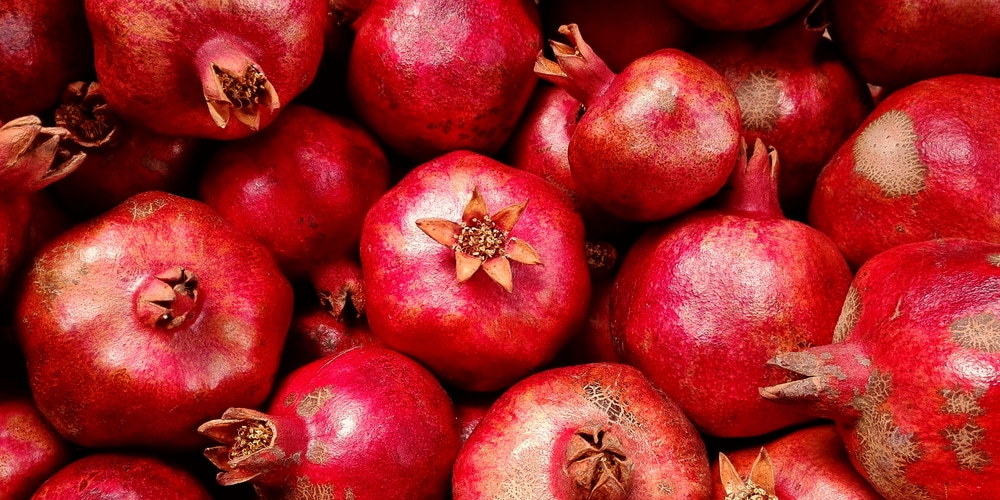Many fruit gardeners have recently developed an increased urge to grow pomegranates because of their high antioxidant levels and their pulp, which are believed to improve health conditions and eliminate oxidants from the body. The pomegranate shrub has orange-red flowers and brightly colored fruits that help enhance the beauty of the backyard.
Quick Answer
Pomegranates can grow in Texas. Planting pomegranates has recently becoming a trend among gardeners, especially those in southern Texas.
Pomegranates can grow in nearly all states that receive full summer sunlight and have well-drained soils. For Texas gardeners planning to grow pomegranates, it may be worth noting that these fruit trees grow their best in USDA planting zones 7 to 10.
This article will cover more on growing pomegranates in Texas and how they should be planted and cared for.
Can pomegranate shrubs grow in Texas?

In Texas, pomegranates are not grown for commercial uses but are mostly used by the owners as antioxidants or beautifying backyards. While they can survive and thrive in nearly the entire state, they perform best in the south, central, and southeast Texas.
Importantly, the climate in Texas varies greatly from semi-tropical and humid in the far East to semi-arid in the far west and south. Because pomegranates perform best in full sun, growing them in the temperate eastern part is not always the best idea. However, this doesn’t mean they can’t survive here. Gardeners in East Texas can successfully grow pomegranates, but it requires a little more effort to protect them from the dangers of frost and high humidity.
For the best yields, the best part to plant pomegranates in Texas is the semi-arid regions, where they can get the amount of sunlight they need to grow and produce bountiful fruits – the climate here is favorable for the growth and maturity of pomegranate shrubs. The shrubs can withstand hardy summer climates and mild winters. Even though pomegranate shrubs can grow in the cooler parts of Texas, they are likely to get damaged when the soil temperatures fall below 18°F.
Pomegranates do well in well-drained, fertile soils with medium alkaline and medium acidic pH. Thankfully, the soils in Texas are within the ideal range; thus no need to add soil additives.
Being shrubs and native to the desert regions, pomegranates have their mechanism for surviving even when the summer gets too hot. Their leaves are deciduous, glossy, and dark green, which helps in controlling transpiration and avoiding excess water loss.
Growing pomegranates
Here are a few steps to follow if you want to plant pomegranates.
1. Choose a site
The Pomegranate tree grows well in full sun and soils with good drainage. The soils should be slightly acidic to slightly alkaline. Gardeners in Texas, particularly in the southern parts, are advantaged because this region has medium soil pH, so they do not need to modify it to grow pomegranates.
2. Prepare the planting spot.
With pomegranates, you will need to make a hole twice the size of the pomegranates tree’s root ball and remove all weeds, roots, and rocks around the hole.
3. Prepare the tree seedling
Pull the pomegranate tree from the container where it was initially planted. Using your fingers, work through the circled and tangled roots until they are free-standing. If you notice any broken roots, trim them out.
4. Place the pomegranate tree in the already prepared hole
While holding the trunk straight with one hand, carefully place the roots in the planting hole, then fill the hole back with soil. Gently press the soil around the trunk to ensure the trunk is firm.
5. Watering
Water the newly planted seedling until the soil gets wet and compressed around the tree’s base. Continue watering every three to four days in the first four or five weeks, then reduce the frequency of watering to once a week. Every time you water, make sure the soil gets saturated. This will provide ideal conditions for the seedling to establish itself.
6. Apply Fertilizer
Always remember to fertilize your pomegranate at least twice a year. Use 2lbs of the appropriate fertilizer while the tree is young. As the tree grows, reduce the amount of fertilizer.
When it comes to fertilizing pomegranate, it is advisable to use water-soluble fertilizer or scatter fertilizer around the tree’s base, then water the ground to help the fertilizer penetrate through the soil.
7. Prune suckers
Pomegranates trees should be pruned as needed during the growing season. Once you notice suckers growing from the tree trunk, use anvil pruners to cut them away. You will also need to prune any dead or damaged branches, crisscrossing limbs and branches growing vertically.
For established pomegranates trees, it is advisable to prune every year in the late winter, after the dangers of frost.
Can Pomegranates Grow In Texas: Conclusion
Planting pomegranates in Texas is recently becoming a trend among most gardeners, especially those in the southern part. If you wish to add beauty to your home, planting a pomegranate tree is a good idea due to its colorful fruits and flowers. Hopefully, you will find this article helpful as you plan to plant pomegranates trees.
You may also like: When to Plant Blueberries in Texas

